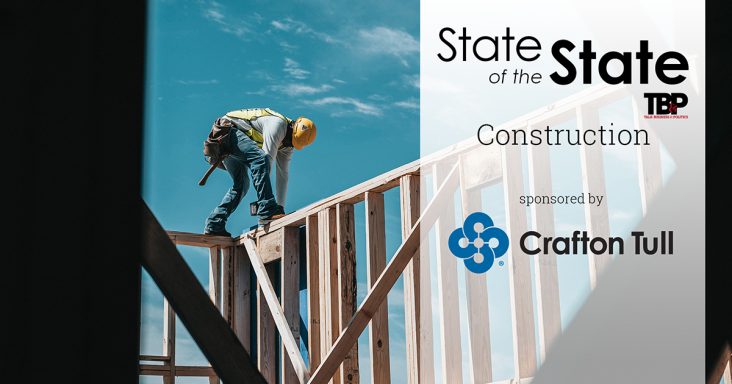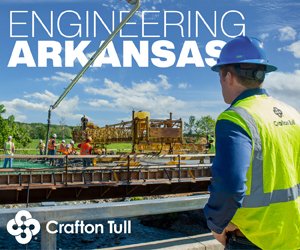State of the State 2022: Construction sector managing through supply chain, labor issues
by February 2, 2022 10:04 am 1,220 views

The construction sector was in a precarious position as 2022 arrived. There are a robust number of commercial, residential and government related projects to be completed. Supply chain issues have stymied those efforts along with workforce shortages as COVID-19 continues. When inflation is added to the mix it makes for an unpredictable sector.
Newly appointed Nabholz CEO Jake Nabholz told Talk Business & Politics his construction company has a record number of back-logged projects. For the next year work crews will be busy clearing those books, but uncertainty remains, he said.
During the next year construction costs will rise by at least 11% and it could be more, he said. The management of costs and budgets will be a top priority as material prices fluctuate wildly in the coming months.
“The next 12 to 18 months we will be busy,” he said. “It’s what happens after that that makes me nervous.”
Halsey Thrasher Harpole Real Estate has several ongoing residential and retail construction projects in the Jonesboro area. HTH Managing Director Gary Harpole said he’s never experienced a market like this. Supply chain issues are impacting the market even more than inflation, Harpole said. It can take as long as 18 weeks to get windows, doors or appliances for new houses his company is building. Prices for those and other items are only locked in for a few days and then go up. These lag times eat into potential profits, he added.
“Supply chain issues are a very real problem on the construction side. It’s an interesting time to be in this business,” he said. “The demand is here. The interest rates are low … it’s been a learning curve.”
Nabholz said his company also is dealing with supply issues. Structural steel joists use to take weeks to get on a construction site now it can take months. It can take up to 12 weeks to just get a door frame and specialty doors can take as long as 20 weeks to acquire. There have been sharp upticks in the price and availability of steel, fire suppression materials and others.
“We’re being told it (supply chain issues) will last through the year. We’re being told it will level off during the first part of 2023,” he said.

The impacts of the federal Infrastructure Investment and Jobs Act won’t be as immediate as the 2009 infrastructure package, which was focused more on shovel-ready projects to kickstart the economy, but Basu said he expects projects from the new infrastructure package to be released in the third and fourth quarters of 2022, according to Engineering News Record. Home prices are soaring and that will in turn lead to higher property taxes which will fill local government coffers, he said.
“So state and local government spending, even without [the infrastructure package], would have been a driver of construction activity,” Basu said. “But now infrastructure factors on top of those monies, so you should see a lot of state and local spending on construction going forward.”
Nabholz said his company is also anticipating what projects the infrastructure deal will bring. In addition to those anticipated projects, the demand for buildings used for manufacturing and warehouse space has been on the rise, he added. Solar energy projects are on the rise as well, he said. Office space and K-12 projects have been in steady decline since the pandemic started. Less people are working in offices. The number of students attending brick and mortar classes has been on a steady decline and that trend will continue into the near future, Nabholz said.
Another industry-wide problem has been skilled labor shortages. Those problems pre-dated the pandemic, he said. Due to the shortages, skilled workers wages will only continue to rise as needs intensify. Despite the unusual slate of problems, Nabholz said he’s confident about what the future holds in his industry.
“You always have issues you have to deal with. … We enjoy finishing these projects and helping our customers achieve their goals.”
Editor’s note: Link here to connect to the State of the State section.
